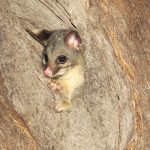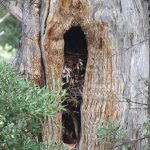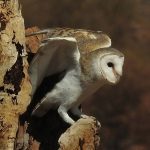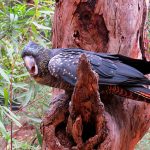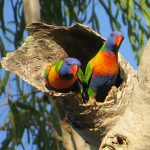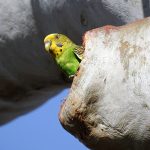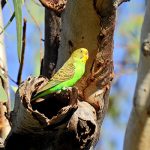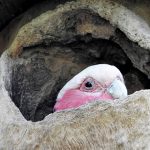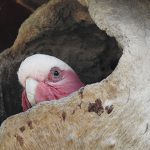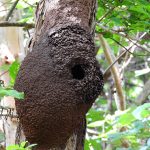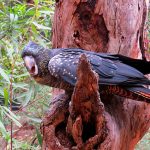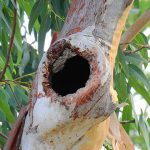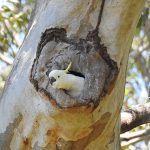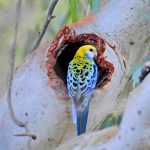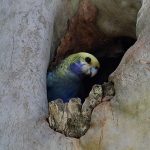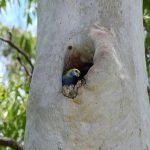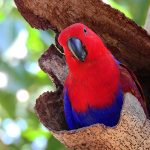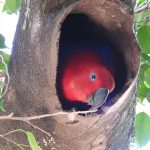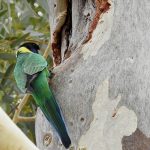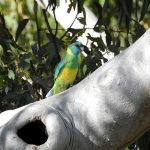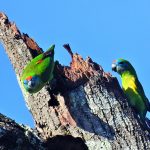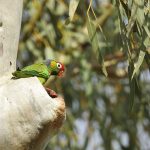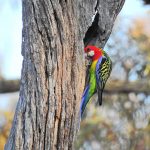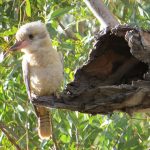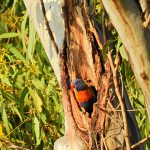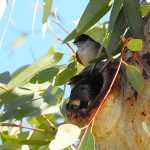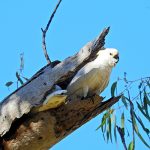IMPORTANCE OF TREE HOLLOWS
The Secret World of Eucalyptus Hollows
A Sanctuary for Australian Wildlife
The Old Sentinel
Imagine standing beneath the broad canopy of a towering eucalyptus tree. The air is thick with the scent of resin, mingled with earth and distant blossoms. Sunlight filters through blue-green leaves, dappling the forest floor. The tree’s trunk, rugged and textured by decades of weather, tells silent stories of storms and bushfires long past. Yet within its weathered embrace lies an even deeper secret—a world hidden in its hollows.
Life Within the Hollows
As the day unfolds, the true magic within these natural cavities reveals itself:
- Nesting birds: Rainbow lorikeets, Rosellas, and clever Cockatoos gather twigs and soft leaves to line the cool, dark recesses. Here, their eggs are shielded from blazing midday sun and prowling Goannas.
- Nocturnal residents: As dusk drapes the forest, marsupials like the Sugar glider and Ringtail possum awaken. They emerge quietly, whiskers twitching, from hollows that shield them from owls and fierce winds.
- Nurseries of life: Inside, beneath the bark’s rough texture, the soft sounds of new life can be heard: the gentle chirping of hatchlings and the tiny rustle of joeys in their mothers’ pouches.
Multi-Sensory Experience
Close your eyes, and you may imagine:
- The cool, earthy touch of damp hollow walls.
- The delicate must of leaf litter mixing with the sweet scent of eucalyptus.
- The soft rustle of fur and faint calls echoing in the stillness.
Ecological Importance: The Heart of the Forest
Hollows are much more than shelters; they are foundational to the biodiversity of Australian ecosystems:
| Hollow Inhabitants | Ecological Role |
|---|---|
| Parrots & Cockatoos | Seed dispersal for new plant growth |
| Microbats | Natural pest control by consuming insects |
| Bees & Beetles | Pollination and nutrient recycling |
| Possums & Gliders | Food web connections and habitat creation |
- Birds flit from cavity to cavity, carrying pollen and seeds, shaping the very future of the forest.
- Insects nesting in the hollows contribute to the breakdown of organic matter, enriching the soil.
- Predators and scavengers benefit from the thriving community within and around these hollows.
The Threat: Loss of Ancient Hollows
Sadly, these precious natural shelters are vanishing at an alarming rate:
- Development and land clearing remove mature trees before they can form hollows.
- Intensive forestry and bushfires further reduce their numbers.
- It can take between 100 to 200 years for a hollow large enough for many species to form naturally.
Without hollows, countless species struggle to find safe breeding sites, leading to population decline and local extinctions.
Conservation: How We Can Help
There is hope, and each of us can make a difference. To protect these natural treasures, we can:
- Safeguard old trees: Preserve mature trees in parks, paddocks, and bushland.
- Leave fallen logs: Dead wood and stumps also provide essential shelter.
- Install nest boxes: For those with gardens or land, providing artificial hollows offers a lifeline. Carefully designed boxes can mimic natural habitats for birds, possums, and even microbats.
- Support conservation efforts: Engage with local wildlife and conservation groups that restore habitats and protect native species.
A Story Worth Preserving
Eucalyptus hollows are far more than empty spaces. They are bustling refuges—nurseries, pantries, sanctuaries—that threads together the rich tapestry of life in the Australian bush. Their preservation is not just a matter of conserving beauty or heritage; it secures the future of unique wildlife and the health of entire ecosystems.
By holding these ancient trees in our care, we become authors of a hopeful story—one where the calls of parrots, the flutter of gliders, and the unseen lives inside bark-bound hollows continue, echoing through forests for generations yet to come.
Learn More & Take Action
- Visit your local bushland or reserve and observe the interconnected life around old trees.
- Share knowledge about the vital role of hollows.
- Participate in community conservation programs to create and protect wildlife habitat.
Together, we can ensure that the silent sentinels of our forests—the grand eucalyptus and their hidden hollows—endure as cradles of Australian biodiversity.

